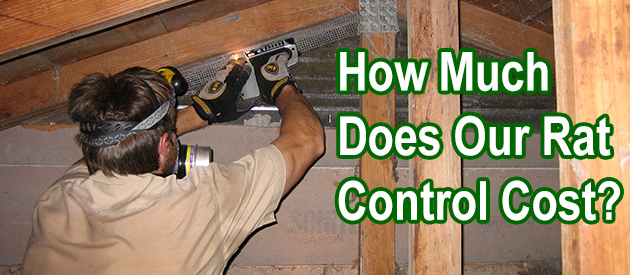Horry County, Myrtle Beach Rat Control Situation:
Hi i live in a building in 4th floor, these days have been raining a lot and I saw a rat walking on my window, I was so afraid that it get into my home. These annoyed rats only way to get in my home is the window, I can't seal it! I will suffocate, can u please advise me how can I keep them away. Or is it because outside is raining a lot so it want to come in my home. And do they make cans of that stuff that you fog with? Do I need to get a fog machine? I'm not even sure what a fog machine is. Something that you would use at a party to make fog?
I found your page about rats traped in the wall. for exactly a week now we have a rat (I assume cause it is loud) or mouse trapped in the bedroom wall. It is always up at night scratching the wall inside the same wall. We currently rent our house and they sent pest control. All they did is set up traps around the house and in the attic. They said that there are tunnels going through that wall but it is really hard to see or get to it ?! I asked them if they can throw poison down those tunnels but i dont think they did. They said that they will not cut a whole in the wall especially because it is not a drywall (it is the house wall) and that it has to die like that. I am so terrified and cant sleep here anymore. I am afraid of them chewing through the wall while im asleep. What do you suggest I should do? How long does it take for them to die or chew through the wall? HELP!
Hello David, My name is Melissa and I manage a 34 unit elderly complex in Myrtle Beach SC. My problem is mice, maybe even something bigger? My units are in 4 buildings with each unit back to back, 1st building has 6 units, 2nd 8, 3rd 12 and 4th 8. My problem is they are in between the walls of the units, my tenants can hear them scratching at night, I do not want to put poison out for fear of the smell that would surely follow that plan. So, my question is what can I do? Some of my tenants have actually caught some mice in traps in the apartments. 6 total. Any advice would greatly be appreciated.
Myrtle Beach Rat Control Tip of The Week
What Is The Natural Diet Of The Black Rat And Norway Rat?
Black Rat
The black rat (in many cases called the ship rat) has a smooth and incredibly long tail that is longer than its head and body. Romans were the ones who brought this species to Britain. The color of the black rat fluctuates from dark to grey-brown. When compared with brown rats, these creatures have little bodies and bigger ears and eyes. Black rats are amazing climbers. They are fit for running along phone wires, utilizing their tails to adjust while moving. The species is additionally called 'rooftop rat' due to building their homes high in rooftop spaces.
Diet
Black rats are viewed as omnivores and eat a wide scope of foods, including seeds, natural products, stems, leaves, fungi, and an assortment of invertebrates and vertebrates. They are generalists, and as a result, not picky on their food choice, which is demonstrated by their propensity to benefit from any meal given to cows, pigs, chickens, felines, and dogs.
Norway Rat
The main thing to know is that, regardless of the name, the Norway rat isn't really from Norway. It is believed that the name originated from a man named John Berkenhout, a British naturalist, who concluded that the brown rats had migrated to the UK from Norway. Present-day researchers think that this type of rat actually originates from China. They showed up in the British Isles most likely transported via ships and goods.
When they got to the UK, be that as it may, they immediately multiplied and set up for business there. That is the reason they are otherwise called the common rat, the road rat, the sewer rat, or the brown-colored rat.
Diet
Norway rats will eat pretty much anything. If they get inside, they'll search in your kitchen cupboards and pantries. Specifically, the rats are looking for meat and even fish; however, they will also feast cheerfully on dry dog food. When they discover the food, they will eat and eat, glutting themselves on what they find, and if they smell food, they'll chew through plastic, lead pipes, wood, and anything else to get there.


